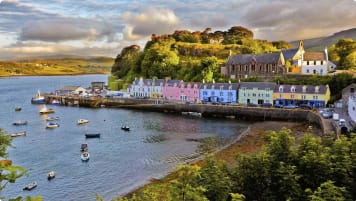Travellers exploring Glasgow's Architectural Heritage
Article about Glasgow Architectural heritage, led by the Industrial revolution, in Victorian Britain, wealth flowed to Scotland to Glasgow and Edinburgh. See and learn on a small group tour for senior couples or mature solo travelers.
11 Aug 21 · 11 mins read

Travellers exploring Glasgow’s Architectural heritage.
Travellers exploring Glasgow’s Architectural heritage can see so much within a 30 minute walking radius of the city centre. Glasgow’s historic buildings are an important part of the city’s social history, and should not be missed by any traveller – even those with only have a passing interest in architecture!
Fashions come and go, but style is forever. Especially ‘Glasgow Style’, the name given to a 19th century art movement founded by the world famous Scottish architect Charles Rennie Mackintosh. No trip to Glasgow is complete without a visit to some of Mackintosh’s most beautiful buildings. Luckily, Odyssey Traveller has you covered. Odyssey’s small guided group history tours take you to Glasgow, Edinburgh and beyond!
In this tour of Scotland, you will be treated not only to the stunning hidden gems and architectural sights of the country–such as Edinburgh’s famous Royal Mile–but you will also go on guided tours to relax amidst Scotland’s breathtaking scenery while learning about the country’s fascinating history and culture, myths and legends. If you want to explore the islands and prehistoric stone circles off the Scottish mainland such as the Outer Hebrides, Orkney and Shetland, then this 20-day tour is for you.
But first, let’s take a closer look at Glasgow’s wonderful buildings. The Mackintosh school might account for many of the city’s most famous structures, but Glasgow—like many old European cities—is a potpourri of styles and traditions that reflect its rich history.

Religious Beginnings: Glasgow Cathedral
The modern city of Glasgow was founded as a small religious settlement in 650 AD by Saint Mungo, an apostle of the Scottish Kingdom of Strathclyde. Mungo is now the patron saint of the city. In 1197, the spectacular Glasgow Cathedral was built on the site of Mungo’s first church, and a tomb was created for him in the lower crypt.
The Cathedral, also known as the High Kirk of Glasgow or St Mungo’s Cathedral, is a superb example of Scottish Gothic architecture. Built prior to the Reformation, it is one of the few medieval churches to have survived that religious conflict unscathed. The church’s rood screen, an ornate partition between the chancel and the nave, is extremely rare in Scotland. The cathedral retains all the principal Gothic features: huge ceilings, ribbed vaults, pointed arches and stained glass. Interestingly, the building is technically not a cathedral, having not been the seat of a bishop since 1690. However, it is still a place of active Christian worship for modern day Scots, hosting a regular Church of Scotland congregation.
Glasgow University
The University of Glasgow, founded in 1451, is the fourth oldest university in the English-speaking world. Owing to its origins in religious scholarship, the university’s earliest buildings were a part of the Glasgow Cathedral complex. In 1460, with the financial aid of Lord Hamilton, the university constructed buildings in High Street–one of the most architecturally significant thoroughfares in the whole city–and stayed there until 1870.
In 1757 the University built the Macfarlane Observatory and later the Hunterian Museum, the oldest in Scotland. The expanded University became a key center of the Scottish Enlightenment, an outpouring of intellectual and scientific achievements that produced titanic figures such as Adam Smith and David Hume. The Hunterian is still operating today, displaying an extensive collection of artefacts from Roman Scotland and even ancient Egypt.
In 1870, the University moved to its current site at Gilmorehill, where its new campus was designed in the Gothic revival style by Sir George Gilbert Scott. Sir George died before the building was completed and his son John Oldrid Scott, himself a famous architect, finished the job in 1891. The University’s iconic 278-foot tower is one of Glasgow’s most notable landmarks. A plaque above the building’s main doorway reads ‘Via, Veritas, Vita’ (the way, the truth, the life), which is the University’s motto.
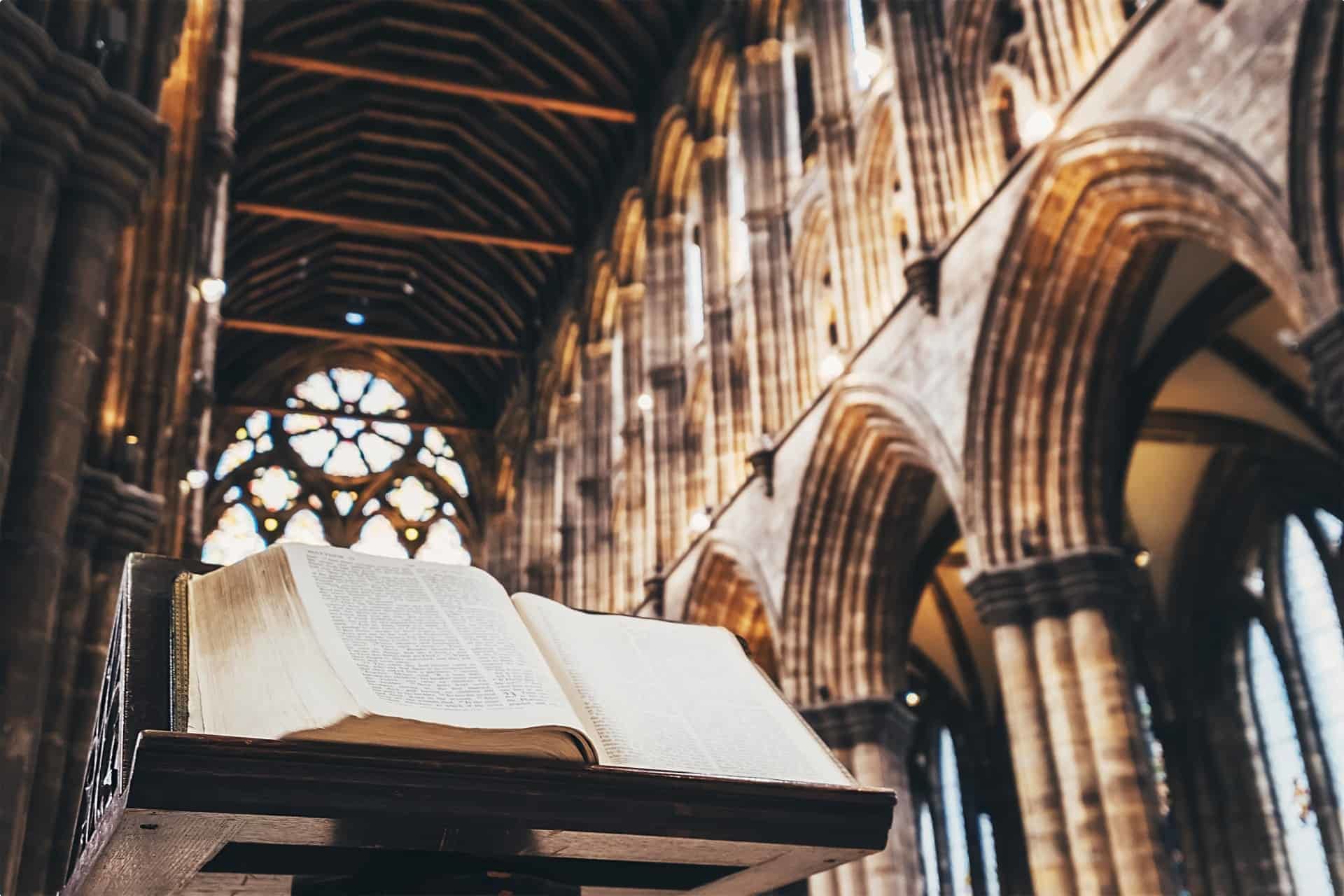
Glasgow Golden Age
The late nineteenth century was an absolute architectural bonanza in Glasgow. The British Empire’s ceaseless global expansion brought untold riches to the northern kingdom. The city almost quadrupled in size between 1800 and 1850. Much of the city’s new wealth was built, indirectly, on slavery, as Glasgow served as the major port in the tobacco trade with Britain’s colonies in the Caribbean. As Europe industrialised, Scotland became the shipbuilding capital of the world and the heart of this huge industry was on the south bank of the River Clyde in Glasgow. The wealth generated by the rapid growth of industry produced a strong culture of philanthropy, the lasting legacy of which are Glasgow’s magnificent nineteenth century buildings. Most of these structures are administered by the Scottish National Trust. Some of the most famous buildings are as follows:
Kelvingrove Art Gallery and Museum
This lovely Spanish Baroque red sandstone building was officially opened in 1901. Its construction was financed by the proceeds of the 1888 Glasgow International Exhibition. In Glasgow, there is a popular myth that the building was built back to front and the responsible architect jumped from a tower in despair, but this is pure fantasy. The grand entrance was always intended to face into the park. The museum hosts an outstanding collection of modern art, the most famous of which is Salvador Dali’s Christ of Saint John of the Cross.

GoMA (Gallery of Modern Art)
This elegant neoclassical building in the heart of Glasgow has worn many masks. Built in 1778 as the townhouse of another wealthy tobacco producer, William Cunninghame of Lainshaw, it was later bought by the Royal Bank of Scotland. It underwent reconstruction in 1827, at which point it received its distinctive Corinthian pillars. In 1954 it became a library, and since 1996 it has been one of the world’s preeminent modern art museums, hosting collections by David Hockney and Andy Warhol.
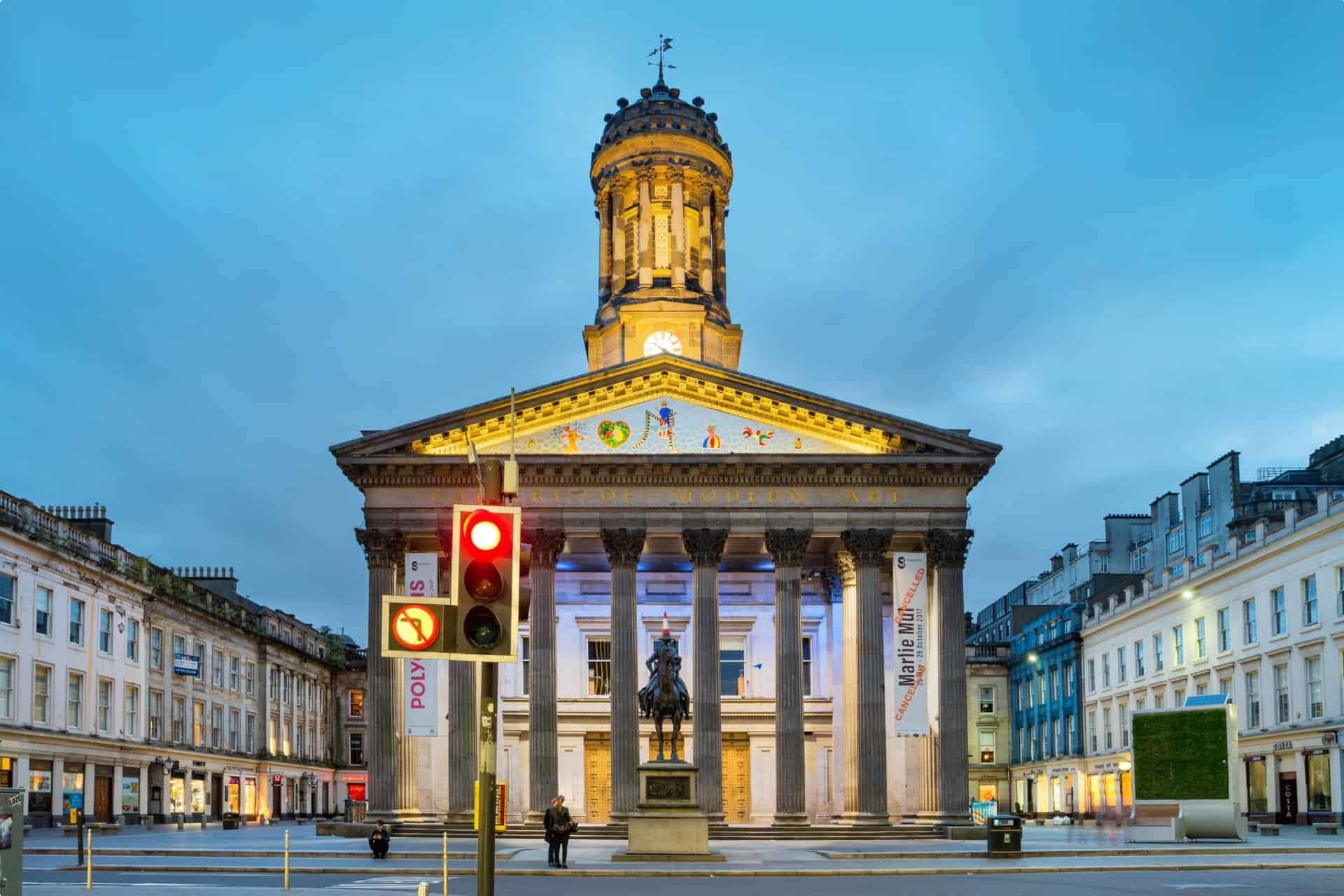
Duke of Wellington Statue
Out front of GoMA is the Statue of the Duke of Wellington, once listed as one of the top 10 most bizarre monuments in the world. It is, without doubt, one of Glasgow’s most iconic landmarks. It has stood since 1844, however in the 1980s an orange traffic cone mysteriously appeared on Wellington’s head. The city council’s attempts to remove the cone have since been futile – usually within a few days a new cone will appear. A hugely popular “Keep the cone” movement grew, arguing that it was an important part of the city’s culture. For some it is a light hearted anti-establishment symbol, a “wee reminder to smile”.

Holmwood House
Holmwood House is a famous residential villa designed by the Scottish architect Alexander Thomson in 1857. This elaborate building, which retains most of its original interior décor, is thought to have influenced Frank Lloyd Wright and other late 19th and early 20th century proto-modernist architects. Thomson is often referred to as Scotland’s ‘other’ great visionary architect, forever in Mackintosh’s shadow. A generation before Mackintosh, he presented himself as a hardworking businessman rather than a glamorous artist, but his influence over the urban landscape is just as profound. Today, the house is under the stewardship of the Scottish National trust and is open to the public. Not only is the design of the house incredible, but also the back story of its patrons and their philanthropic work in this small community worthy of mention and study if you have time.

St Vincent Street Church
Thomson became known as “the Greek” in the 1850s when he adopted the classical Greek style in all of his designs. St Vincent Street Church is the sole survivor of the three churches Thomson designed and built for the city. Completed in 1859, the building features six massive Ionic columns and is beautifully decorated with classical motifs. Henry Russell Hitchcock, one of the world’s foremost architectural historians, described the structure as one of the three greatest Romantic Classical churches on the planet.
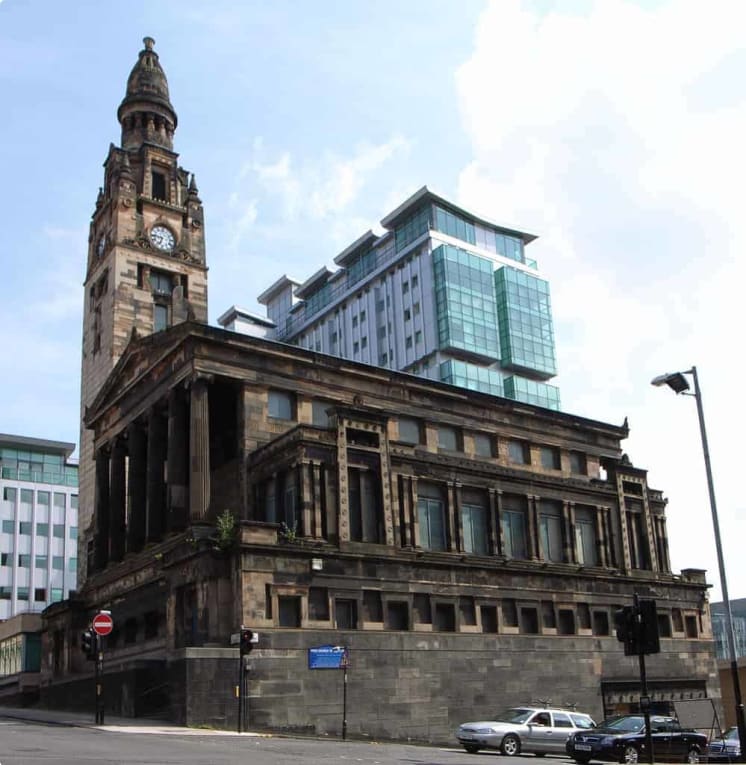
Grand Central Hotel
If you arrive in Glasgow by train, you will be greeted outside the concourse by the magnificent Grand Central Hotel. Built by the Scottish Victorian architect Sir Robert Rowand Anderson in 1883, the Central Hotel is a fine example of a Queen Anne revivalist building. Anderson conducted a tour of London’s most impressive railway terminals because finalising his designs. The finished building features a massive sandstone clock tower and a lead-clad summit (a detail not shared with other Glasgow buildings). Many famous people have stayed in the hotel, including Frank Sinatra and Winston Churchill.

Glasgow City Chambers
The grandiose staircases, marble and mosaic walls and granite pillars of the Glasgow City Chambers will take your breath away. This Victorian masterpiece was unveiled by Queen Victoria herself in 1888, and still mesmerises today. A competition was held for the building’s design, won by Scottish architect William Young. His beaux arts style structure was infused with Italianate influences, intended to express the wealth and prowess of the Empires Second City. The central apex of the exterior sculpture is popularly known as Glasgow’s Statue of Liberty due to its close resemblance to the famous New York monument.
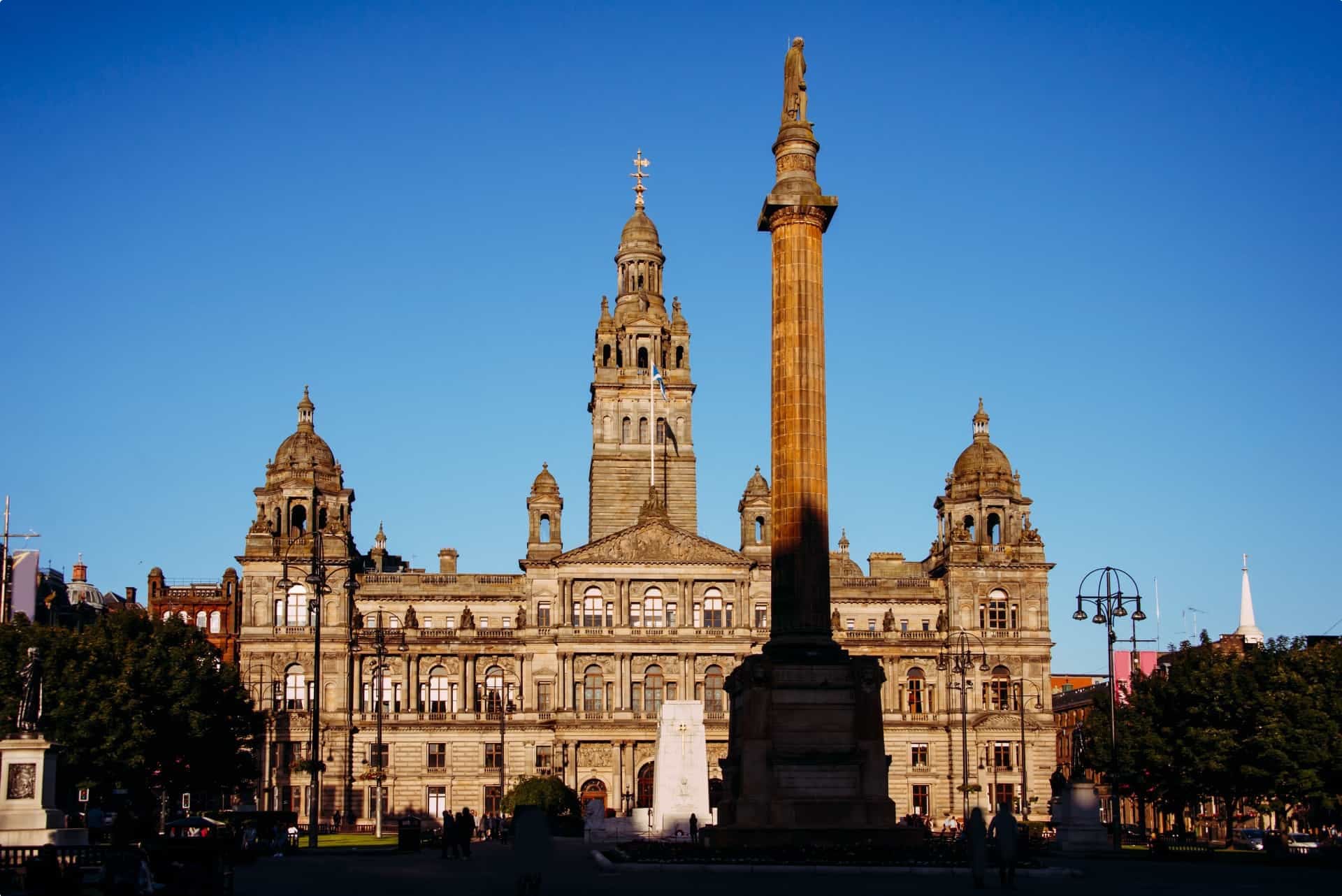
Mitchell Library
You think you’ve seen a library? Get a load of this magnificent beast. Originally established in 1877 as the bequest of a wealthy tobacco producer, the complete building was not opened until 1911. It’s most striking feature is an enormous domed roof with immaculate detailing. Perched atop the dome is a bronze statue designed by the famous Scottish sculptor Thomas Clapperton. He titled his figure Literature, but it is often referred to as Minerva, the Roman goddess of wisdom. Be sure to circumnavigate the building – the rear is equally amazing!

People’s Palace and Winter Gardens
The People’s Palace is a museum and glasshouse situated in Glasgow’s East End. It is a great example of civic architecture. When the building was opened in 1898 by the Earl of Rosebery, it sat among one of the most unhealthy and overcrowded parts of the city. The Palace was thus intended as a cultural center for the people of the East End. It was designed by the City Engineer, Alexander McDonald, who declared the building “open to the people for ever and ever”. In the 1980s, the Palace’s resident cat, Smudge, made headlines when she became a member of a trade union. There is a plaque dedicated to the famous feline outside the building. Afterwards, wander among the exotic palms and plants in the adjacent Winter Gardens, Glasgow’s oldest public outdoor space.

Marvellous Mackintosh
By the turn of the 19th century, Glasgow had become one of the world’s great architectural hubs. At the Glasgow School of Art, Charles Rennie Mackintosh and his conspirators developed a style that was decorative, eclectic and historical. This became known as the ‘Glasgow Style’: long flowing lines, plain surfaces, sumptuous detail and muted colours. In practice Glasgow Style had a lot in common with the fin-de-siecle art movement known as ‘Art Nouveau’. The influence of the Glasgow school eventually went beyond architecture, into fields as varied as furniture and art. Indeed, Mackintosh thought of himself an artist in the truest sense. ‘The artist cannot attain to mastery in his art’, he wrote, ‘unless he is endowed in the highest degree with the faculty of invention’.

The Lighthouse
11 Mitchell Lane, Central Glasgow
The Lighthouse was Mackintosh’s very first public commission, and boy did he pull it off. Completed in 1895, the building was constructed from the former offices of the Glasgow Herald newspaper. It’s most famous feature is the hypnotic spiral staircase leading to the top of the tower, from which visitors have access to incredible views of the city.

Glasgow School of Art
Often described as Mackintosh’s masterpiece, and ‘the world’s first modernist building’. Mackintosh won a competition to design the building and set about incorporating Scottish baronial and art nouveau motifs. Situated at the edge of a steep hill, the building stretches along an entire city block. The interior is only open to guided tours, but it is well worth your time to feast your eyes on its incredible library and its marvellous and innovative lighting.
Sadly, at the time of writing the building’s future looks grim. On the 16 June 2018 a huge fire destroyed a large portion of this national treasure, and Scots are divided over calls to immediately restore it.
Scotland Street School Museum
The Scotland Street School, now a museum, is one of Glasgow’s foremost architectural attractions. Mackintosh based his designs on the Rowallan Castle, an ancient castle in Ayrshire, and Falkland Palace, the ancient seat of Scottish kings. The structure features an impressive pair of baronial style staircases. Visitors to the museum can participate in a Victorian classroom situation, in which actors posing as teachers impose strict discipline on the unsuspecting ‘students’.

House for an Art Lover
In the early 1990s, a Glasgow civil engineer had the idea to construct one of Charles Mackintosh’s famous unrealised art nouveau designs. Built between 1989 and 1996, close to a hundred years after it was conceived, the House for an Art Lover is mostly faithful to the original designs of Mackintosh and his wife Margaret MacDonald. Situated in Bellahouston Park, it is owned by a charitable company whose purpose is the “stimulation of public interest in art, design and architecture’.
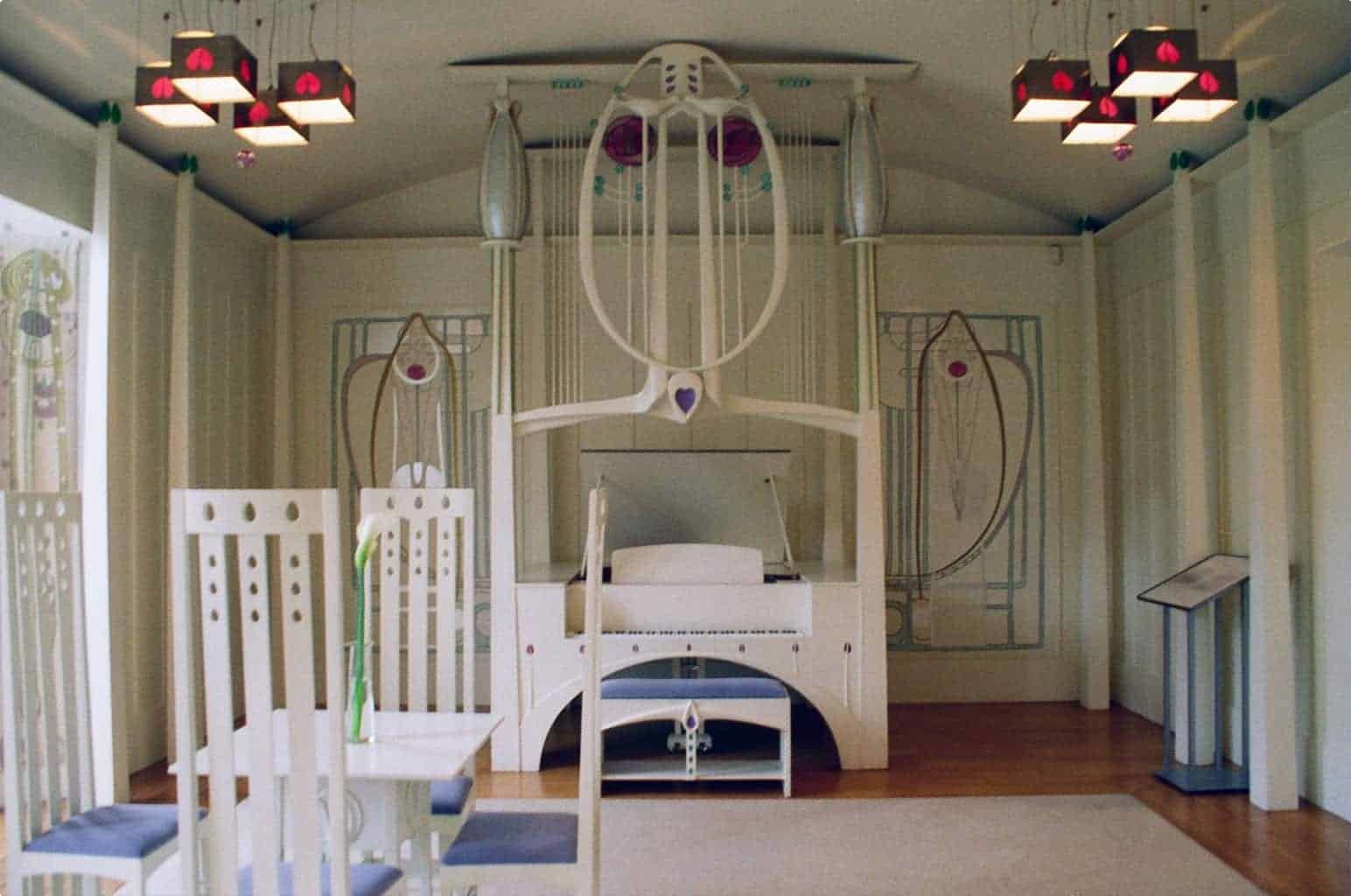
Willow Tearooms
Another minor Mackintosh masterpiece are the Willow Tearooms, soon to be reopened to the public in time for the 150th anniversary of the famous architect’s birth in June 2018. Mackintosh was commissioned to design the building by local businesswoman Catherine Cranston, a central figure in the temperance movement. Cranston envisioned a series of fashionable ‘art tearooms’ where people could be to socialise and enjoy non-alcoholic beverages. Mackintosh designed all of the rooms, but the most extravagant is the Room Deluxe, described at the time as “a fantasy for afternoon tea”.
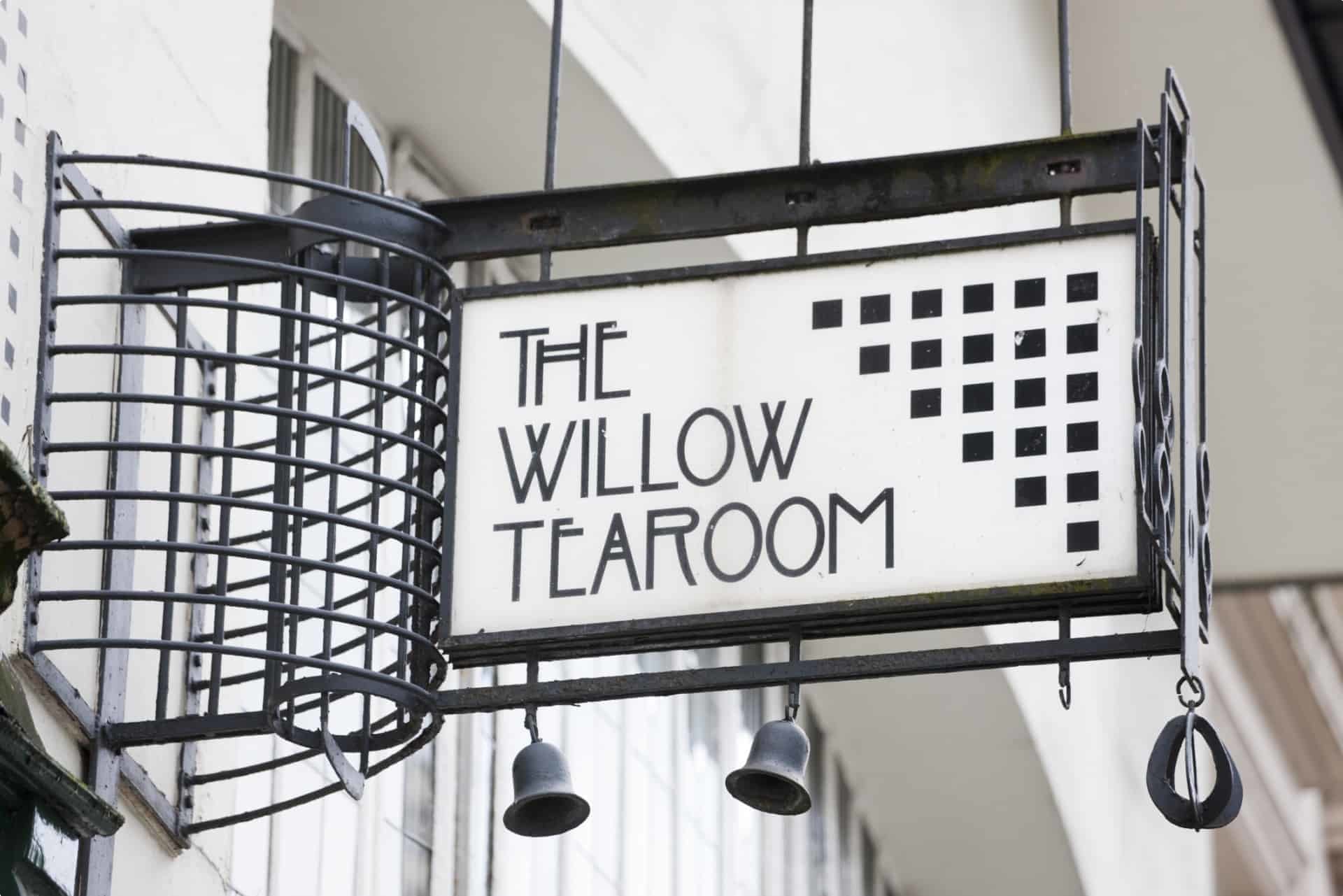
Mackintosh House
The Hunterian Museum at the University of Glasgow houses one of the most important collections of work designed by Mackintosh and his wife Margaret. The Mackintosh House is a reassemblage of disciplined, austere interiors from the Mackintosh’s Glasgow home. When their Southpark Avenue home was demolished in 1960, the furnishings were painstakingly preserved and replicated at the Hunterian. Travellers can look inside the house for a small admission charge.
Modern Glasgow: Clyde Auditorium (SEC Armadillo)
This 2000-seat theatre is one Glasgow’s most recognisable buildings. It was designed by Foster and Partners architectural firm to look like a series of interlocking ship’s hulls, a reference to the city’s shipbuilding past. It is often likened to the Sydney Opera House, and is known by locals as ‘The Armadillo’.
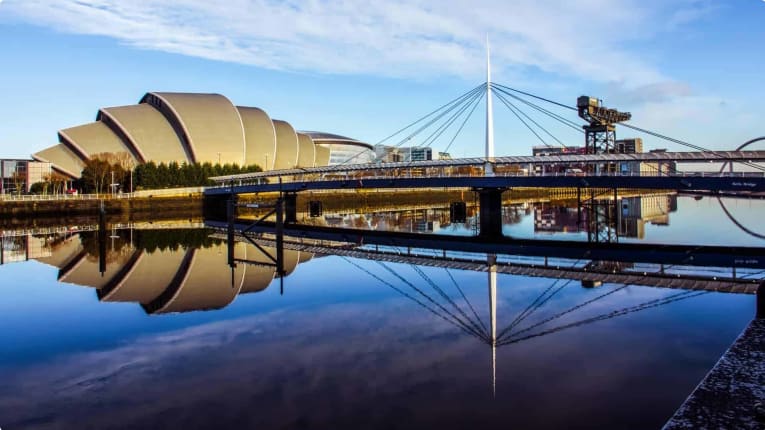
History everywhere you look
Glasgow is an incredible city for lovers of history and architecture. From centuries old churches and cathedrals, to grand Victorian icons of the industrial age, to art nouveau masterpieces and stylish modern wonders, Glasgow’s buildings truly reflect its long and proud history. See for yourself with one of Odyssey Traveller’s many small guided group history tours to this Scottish jewel.
Odyssey Traveller tours for seniors
Odyssey Traveller is famous for our small groups, and we average eight participants per tour. Our maximum group size is eighteen people, which ensures quality, flexibility and care that is tailored to our clients. We specialise in small group tours for the senior traveller who is seeking adventure or is curious about the world we live in. Typically, our clients begin travelling with us from their mid 50s onward. But be prepared to meet fellow travellers in their 80s and beyond! Both couples and solo travellers are very welcome on our tours.
If you are passionate about learning while you travel, you will find a variety of opportunities with Odyssey Traveller. Perhaps you are a lover of art and literature? We offer a range of tours tailored to this subject with destinations including Paris, Scandinavia and England. If you have a keen interest in archaeology, Odyssey Traveller offers specialised tours that include hands on experiences in Argentina or China. We offer walking tours for active travellers, and even a Summer School series based in Hobart, Tasmania. As long as you remain inquisitive, we continue to design programs to challenge and excite.
Originally published June 15, 2018.
Updated on October 11, 2019.
Updated August 2021
Related Tours
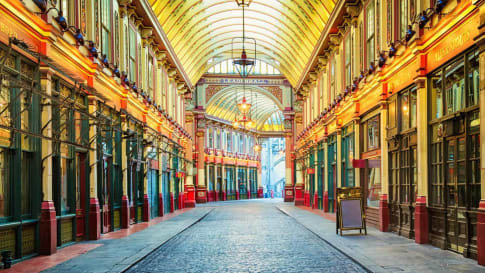
21 days
Sep, JunQueen Victoria's Great Britain: a small group tour
Visiting England, Scotland
A small group tour of England that explores the history of Victorian Britain. This escorted tour spends time knowledgeable local guides with travellers in key destinations in England and Scotland that shaped the British isles in this period including a collection of UNESCO world heritage locations.
From A$15,880 AUD
View Tour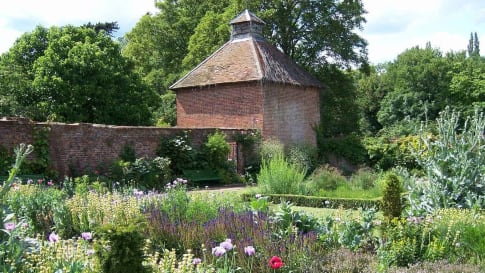
16 days
JunBritish Gardens Small Group Tour including Chatsworth RHS show
Visiting England, Scotland
From A$16,895 AUD
View Tour
From A$13,915 AUD
View TourRelated Articles
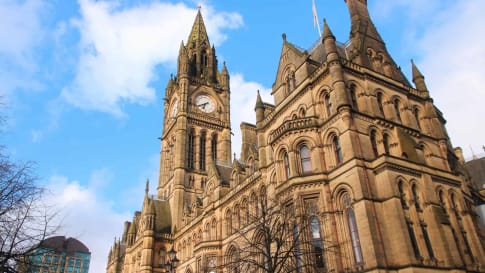
Bees in Manchester: a surprising symbol of the Industrial Revolution
Bees in Manchester: a surprising symbol of the Industrial Revolution The bee is an intriguing symbol for the city of Manchester. The city’s damp climate provided the ideal conditions for milling cotton. But this is…
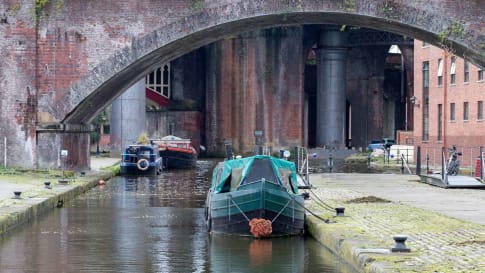
Britain: First Industrial Nation
Britain: The First Industrial Nation In the mid-18th century, the Industrial Revolution was largely confined to Britain. Historians and economists continue to debate what it was that sparked the urbanisation and industrialisation that would change…

Country Spotlight: Scotland
Article sets the platform for small group tours learning about Scotland and the Scottish isles for senior couples and solo travellers.

Edinburgh, Scotland
Article about the capital of Scotland, Edinburgh. Senior couple and mature solo travellers explore this city and Glasgow plus the Scottish isles in writing and on a small group tour with like minded people.

Exploring Newcastle upon Tyne: The Definitive guide for Travellers
Newcastle upon Tyne is discussed in this article for senior couples and mature solo travellers on an educational small group tour. Learn about this English city and the Romans, Vikings, Middle ages and Victoria and the Industrial revolution.
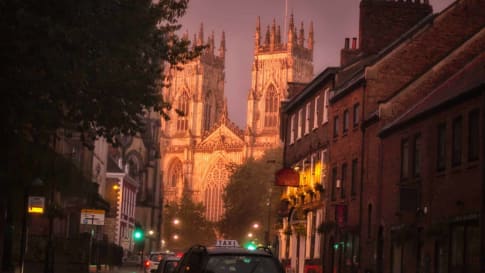
Exploring York
Article about York, England. Explored on a small group educational tour for senior couples and mature singles curious about history from the Romans, the Vikings and the industrial revolution. Including the famous York Minster a great cathedral!
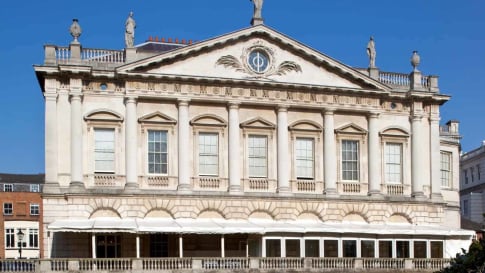
Georgian Style of Architecture: Definitive Guide for Seniors
Article to provide the senior couple or mature solo traveler with an appreciation of the influence of Georgian Architecture in Britain when on a small group educational tour.
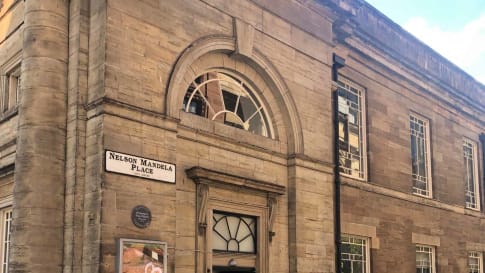
Glasgow; Nelson Mandela Place
How Glasgow stood with the South African Leader Against Apartheid as part of learning about Scotland before joining a small group tour for senior couples and mature solo travellers.

Ten Things We Never Knew About London
Article supports time in London, England's capital city. The city has a history back beyond the Romans, and a collection of some of the finest Georgian and Victorian Architecture on an educational small group tours for senior couples and mature solo travellers.

